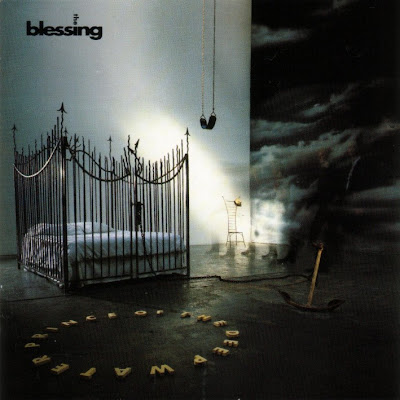Santana III Legacy Edition
[ORIGINAL RECORDING REMASTERED]
[SPECIAL EDITION]
Santana
The year was 1971, and young Neil Schon had a big decision to make. The 17-year-old guitar prodigy was invited by Eric Clapton to join Derek and the Dominoes at the same time that he was invited by Carlos Santana to join his group. Schon chose Santana just in time to go into the studio to join in the recording of the band's third album.
By the time Santana III was recorded, the band was still riding the huge wave they created with their historic appearance at Woodstock two years earlier. Their self-titled first album had reached #4 on the Billboard Album Chart, and their second, Abraxas, sold more than four-million and reached #1 in 1970. Everything seemed to be going their way.
What most of their fans didn't know was that the pressure of success was taking its toll on the group, and by 1971 they were on the verge of disintegrating. Santana wanted the band to put emphasis on its Mexican musical roots. Greg Rollie, an original member of the band when it was formed in 1966 as the Santana Blues Band, wanted to go with a more progressive sound and themed concept albums, which suited young Schon just fine, given his classical training.
The tensions became more than the group could handle, and soon after the release of Santana III, the band’s members went their separate ways. Rollie later formed Journey, which would also become Schon's home.
Carlos Santana, guitar, vocals;
Greg Rolie, piano, organ, vocals;
David Brown, bass;
Jose Areas, timbales, conga percussion, vocals, drums, flugelhorn;
Michael Carabello, conga, vocals, percussion, tambourine;
Neil Schon, guitar;
Michael Shrieve, percussion, vibes;
Coke Escovedo, percussion, backing vocals;
Rico Reyes, vocals;
Luis Gasca, trumpet;
Linda Tillery backing vocals;
Mario Ochoa, piano;
Gregg Errico, tambourine;
Tower of Power Horn Section
Disc: 1
1. Batuka
2. No One To Depend On
3. Taboo
4. Toussaint L'Overture
5. Everybody's Everything
6. Guajira
7. Jungle Strut
8. Everything's Coming Our Way
9. Para Los Rumberos
10. Gumbo (bonus track)
11. Folsom Street (bonus track)
12. Banbeye (bonus track)
13. No One To Depend On (bonus track- single version)
The second CD in the set contains the band's complete final set on the night that the legendary Fillmore West in San Francisco closed, July 4, 1971, with Bill Graham doing their introduction: "What better way than to close it, with the sounds of the streets, Santana" ~
Disc: 2
1. Batuka (Live)
2. No One To Depend On (Live)
3. Toussaint L'Overture (Live)
4. Taboo (Live)
5. Jungle Strut (Live)
6. Black Magic Woman/Gypsy Queen (Live)
7. Incident At Neshabur (Live)
8. In A Silent Way (Live)
9. Savor (Live)
10. Para Los Rumberos (Live)
11. Gumbo (Live)
Review by Matt P. — 3-16-06
excerpted from "Ground and Sky"...
Santana III is the final album by the full "Woodstock" lineup of the Santana band. They were joined here by the young guitar prodigy Neil Schon; this was the first of two albums he made with Santana before leaving to form Journey. On III, Santana fully assimilated their sound to the studio. It's not as if they started to become a singles band (though "Everything's Coming Our Way" is quite catchy) but there is a gloss, a professionalism and a confidence evident in these recordings that was definitely absent from their earlier material. The fuller arrangements were also a product of the assistance of numerous studio musicians.
The music is busier and beefier — credit Schon, who often pushes keyboardist Greg Rolie to the back of the mix. There is nothing here, in my opinion, that matches the first half of Abraxas, but I think that the album is pretty strong. There is a weaker patch during the middle third, but that may only be because the overtly Latin material has a "been there, done that" feel to it at this point. I'm more interested in hearing how Santana incorporate the beats and percussion of their Latin roots into a contemporary musical vision than I am in hearing them do homages. On "Batuka," "No One To Depend On," "Taboo," Jungle Strut" and "Everything's Coming Our Way," the band offers a creative blend of hard rock, Latin and jazz music that I think is worth hearing, and which also made an impact on the era; for example, War took the essence of "No One To Depend On," relaxed it, and went on to score a slew of hit singles.
/ Carlos Santana is rightfully credited (along with Ritchie Valens, Tito Puente, Jose Feliciano and Los Lobos) with bringing Latin rock into the American mainstream. We shouldn't forget, though, that Santana was also an important fixture in the late '60s San Francisco music scene that also included the likes of Grateful Dead, Janis Joplin, Jefferson Airplane, and Creedence Clearwater Revival, all of whom owe a good measure of their success to promoter Bill Graham and his legendary Fillmore West.
The original Santana lineup first played the Fillmore in December 1968. The final Fillmore performance came on July 4, 1971 and is released for the first time in its entirety on this CD set.
~
~
.jpg)









